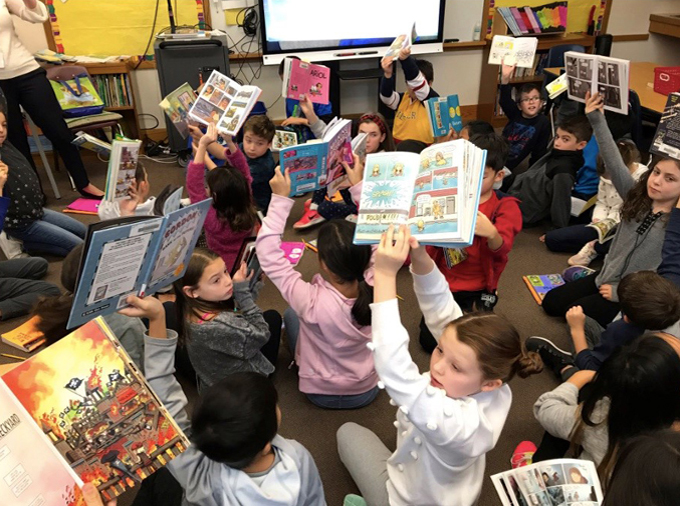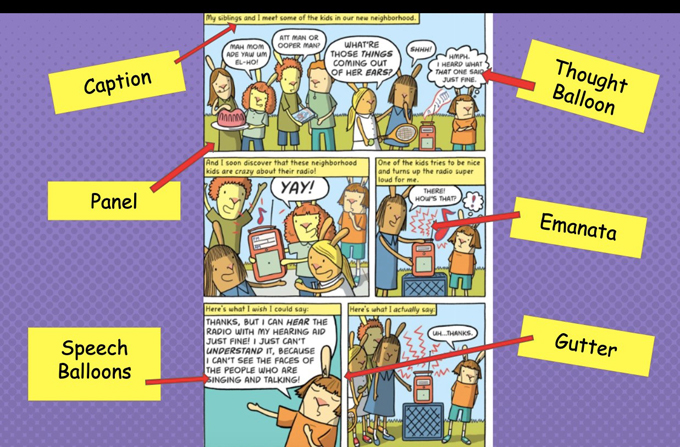 It was a frigid January morning right after the holiday break when I met a group of 45 fourth-grade students assembled in the library of a suburban New York elementary school. In the first hour of the school day, following a two-week break, a visiting teacher would expect to be greeted by sleepy-eyed students longing to return to the freedom of vacation. Instead, I was welcomed by the enthusiastic hum of excited learners clutching novels, notebooks, and pencils.
It was a frigid January morning right after the holiday break when I met a group of 45 fourth-grade students assembled in the library of a suburban New York elementary school. In the first hour of the school day, following a two-week break, a visiting teacher would expect to be greeted by sleepy-eyed students longing to return to the freedom of vacation. Instead, I was welcomed by the enthusiastic hum of excited learners clutching novels, notebooks, and pencils.
The students already knew that today they would begin studying the format and structures of graphic novels and they were eager to dive in. We spent the next six days of one-hour reading workshop sessions in a graphic novel bootcamp. Each day, students engaged with a specific set of teacher-designed inquiry lessons that explored the elements of art, design, and story that are consistent with the graphic novel.
The request to begin an inquiry into the format of graphic novels and their features came from teachers who recognized that the narrative structures, visual images, and design features offered in elementary literature were growing more complex. They also recognized that the publishing trends that were emerging in children’s literature were placing increased literacy demands upon strengthening a visual culture that included illustrated books, graphic novels, and visual narratives. Likewise, these texts were bringing new challenges to teachers who desired rigorous reading skills and strategies for their students. The teachers felt they had a responsibility, and desire, to foster new approaches in helping their readers navigate these changes.
 Although the changing role of visual images in literature has had a profound effect on teaching literacy acquisition in the 21st century, it has also provided new options for classroom engagement while connecting readers with books that matter in their lives. These are the books so many of our students love and want to read. However, many students often do not have the skill set needed to read visual images in graphic novels because they have yet to have the opportunity for guided learning in reading this format.
Although the changing role of visual images in literature has had a profound effect on teaching literacy acquisition in the 21st century, it has also provided new options for classroom engagement while connecting readers with books that matter in their lives. These are the books so many of our students love and want to read. However, many students often do not have the skill set needed to read visual images in graphic novels because they have yet to have the opportunity for guided learning in reading this format.
We know that there are many benefits to providing students with experience and engagement with graphic novels as this guide from Scholastic demonstrates. One benefit is that students become better prepared to read and understand the visual information that they encounter. Our learners are raised navigating narratives presented through websites, video games, and interactive media. As a result, learning and maintaining strong visual literacy is a necessary skill. Learning to read the elements of art in graphic novels gives students experience with visual literacy in a way that is engaging and builds meaning.
Second, graphic novels require a repertoire of reading strategies of which students may not yet be familiar. When reading a graphic novel, the meaning revealed in images is as important as reading the text. The Random House Educators’ Guide explains how panels, frames, color, shading, graphic weight, positioning, and physical interpretation need to be “read” in order to understand the story being told.
Finally, graphic novels can help to improve reading development for students struggling with reading and/or language acquisition. These texts are referred to as the “grand equalizer” by Yale Center for Dyslexia & Creativity because of their “universal appeal to most students” and ability to “invite all levels of readers into reading conversations.” For readers, the illustrations provide context clues which add to the meaning of difficult vocabulary and understanding of written narrative.
Still, graphic novels include classic elements of narrative storytelling such as character development, hero's quest, and theme. These visual elements and the comic book format make them more accessible, especially for struggling readers. As Art Spiegelman, author of the Pulitzer Prize-winning graphic novel Maus I: A Survivor's Tale: My Father Bleeds History(Pantheon), so insightfully stated, "Comics are a gateway drug to literacy."
Susan Luft is an elementary English language arts coordinator for Scarsdale Public Schools, New York. She is also a member of Drew University’s Digital Literacy Collaborative project. You can follow her on Twitter.